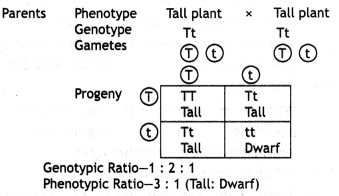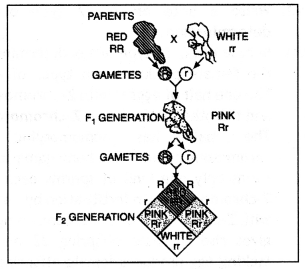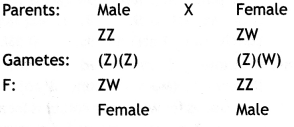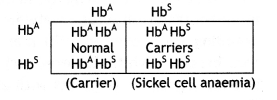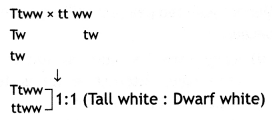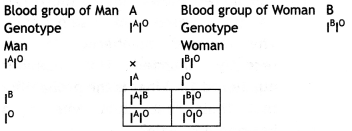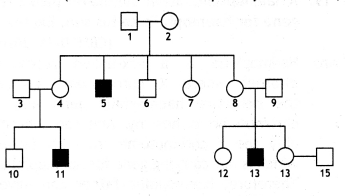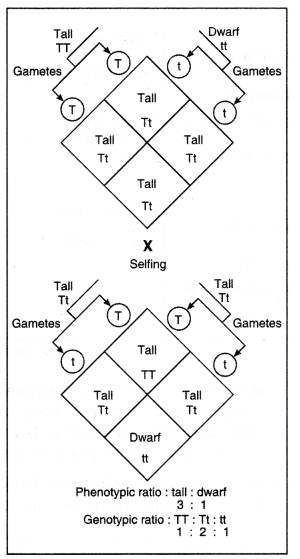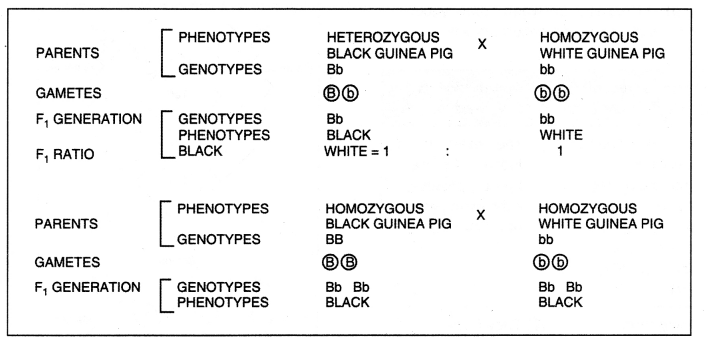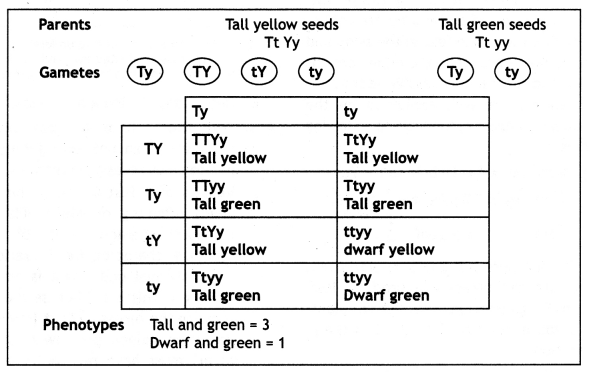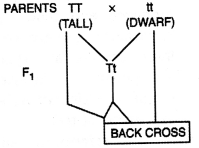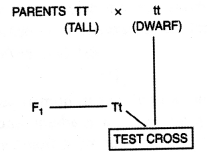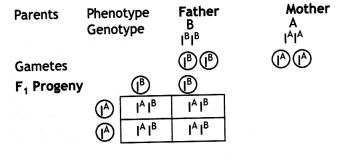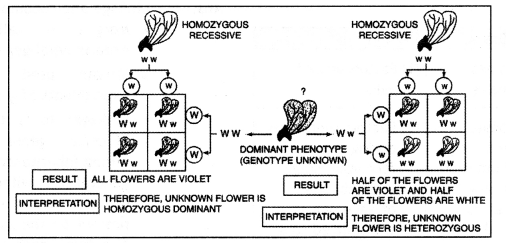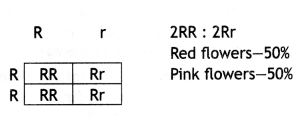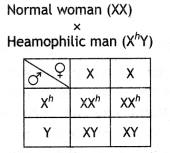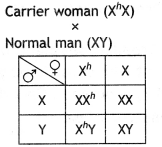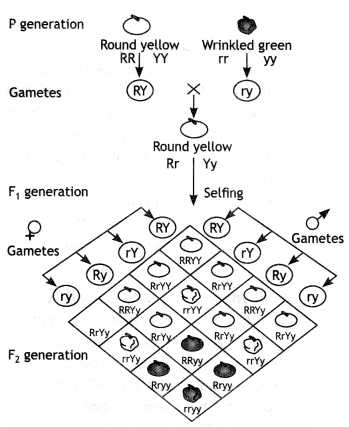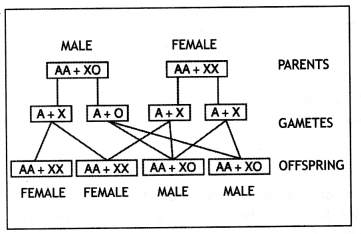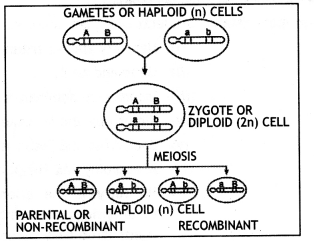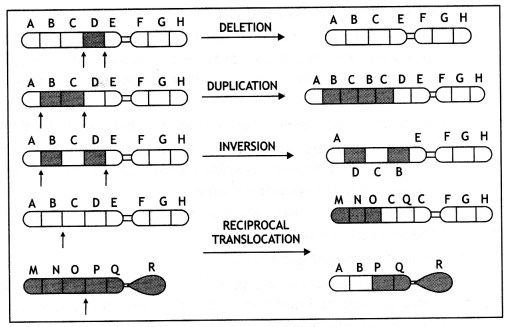Here we are providing Class 12 Biology Important Extra Questions and Answers Chapter 15 Biodiversity and Conservation. Important Questions for Class 12 Biology are the best resource for students which helps in Class 12 board exams.
Class 12 Biology Chapter 15 Important Extra Questions Biodiversity and Conservation
Biodiversity and Conservation Important Extra Questions Very Short Answer Type
Question 1.
Define biodiversity.
Answer:
It refers to the totality of genes, species, and ecosystem of a region, e.g. Forest.
Question 2.
Is biodiversity the same from place to place?
Answer:
No, it differs from one place to another place.
Question 3.
What is the advantage of genetically uniform crop plants?
Answer:
The monoculture of crop plants will give a high yield.
Question 4.
What is the disadvantage of genetically uniform crop plants?
Answer:
Such crop plants are highly prone to diseases.
Question 5.
What is the total number of species discovered and described presently on earth? What is the predicted number?
Answer:
1.7 million and 50 million, respectively.
Question 6.
What are the characteristics that make a community stable?
Answer:
The stability of an ecosystem is controlled by:
- Carrying capacity,
- Recycling of wastes,
- Density-related self-regulation and
- Feedback system.
Question 7.
What accounts for the greater ecological diversity of India?
Answer:
India has high ecological diversity due to a variety of topography, soil types, climates, rainfall zones, sea coasts, islands, etc. Ten well-demarcated biogeographical zones with different biota occur in India.
Question 8.
What is the difference between endemic and exotic species?
Answer:
Endemic species belong to a local area and are of limited distribution due to biotic and abiotic regulations, e.g. Lion Tailed Macaque.
Exotic species enter from outside with under distribution due to non-control of biotic and abiotic factors. They face little resistance by endemic species, e.g. Eucalyptus.
Question 9.
How does species diversity differ from ecological diversity?
Answer:
Species diversity is the occurrence of variety and abundance of species in a community while ecological diversity is the occurrence of different ecosystems and communities in a geographical area.
Question 10.
Why is genetic variation important in the plant Rauwolfia vomitoria?
Answer:
It results in differences in the potency and concentration of drug reserpine in the plant Rauwolfia vomitoria found in different regions of the Himalayas.
Question 11.
What is the advantage to a species having more genetic diversity?
Answer:
It enables the species to adjust and adapt to changed environmental conditions.
Question 12.
What are the consequences of lower genetic diversity?
Answer:
Lower genetic diversity leads to uniformity.
Question 13.
Coin a term for the following:
(i) Within community diversity
Answer:
Alpha diversity.
(ii) Between community diversity.
Answer:
Beta diversity.
Question 14.
What is the approximate drop of temperature with a corresponding increase/decrease of about 1000 m in altitude?
Answer:
There is about a 6.5° drop in temperature.
Question 15.
What is the cause of mortality of ducks, swans, and cranes?
Answer:
Lead poisoning as they take in spent gunshots that fall into lakes and marshes.
Question 16.
List two uses of the Red List.
Answer:
- Developing awareness about the importance of threatened biodiversity.
- Identification and documentation of endangered species.
Question 17.
The red list contains an assessment of how many species?
Answer:
18,000 species out of which 11,000 are threatened.
Question 18.
What could have triggered mass extinctions of species in the past?
Answer:
Glaciation, melting of snow, the eruption of large volcanoes, earthquakes, movement of continents, large meteorites falling on the earth, drought, etc. could have triggered mass extinctions.
Question 19.
What does ‘red’ indicate in the IUCN red list (2004)?
Answer:
‘Red’ in IUCN red list (2004) indicates the threatened species, i.e. the species under varying degrees of extinction risk categories.
Question 20.
What is the importance of cryopreservation in the conservation of biodiversity? (CBSE (Delhi) 2015)
Answer:
It serves the purpose of ex situ conservation.
Question 21.
Name the type of biodiversity represented by the following:
(a) 50,000 different strains of rice in India.
Answer:
Genetic diversity
(b) Estuaries and alpine meadows in India. (CBSE (Delhi) 2013)
Answer:
Ecological diversity.
Question 22.
Write the basis on which an organism occupies a space in its community-natural surrounding. (CBSE Outside Delhi 2013)
Answer:
Alexander von Humboldt observed that within a region species richness increased with increasing explored area up to a limit.
Question 23.
Mention the kind of biodiversity of more than a thousand varieties of mangoes in India. How is it possible? (CBSE (Delhi) 2015)
Answer:
- Genetic diversity
- (a) It is the measure of variation in genetic information contained in the organism.
(b) It enables a population to adapt to the environment.
Biodiversity and Conservation Important Extra Questions Short Answer Type
Question 1.
What will be the consequences of the loss of biodiversity?
Answer:
Consequences of loss of biodiversity:
- It would check the evolutionary capability of biota to cope up with environmental changes.
- It would result in the extinction of species.
- As man is dependant on food and other necessities, its loss will be hard-pressed for mankind.
Question 2.
What are the causes of the loss of biodiversity?
Answer:
Biological diversity is lost before its size is known. Causes of the toss of biodiversity:
- Increased human population.
- Increased consumption of resources.
- Pollution due to human activities.
Question 3.
How many genes are present in mycoplasma, E. coli, Drosophila, Oryza sativa, and Homo sapiens?
Answer:
| Name of organism | Number of genes |
| 1. Mycoplasma | 450-700 |
| 2.E.coli | 3,200 |
| 3. Drosophila | 13,000 |
| 4. Oryza sativa | 32,000-50,000 |
| 5. Homo sapiens | 31,000. |
Question 4.
List three levels of biodiversity.
Answer:
Biodiversity can be studied at the following levels:
- Genetic diversity
- Species diversity
- Ecological/Ecosystem diversity.
Question 5.
What is the basis of speciation?
Answer:
Basis of speciation. The amount of genetic variation is the basis of speciation (evolution of new species). It has a key role in the maintenance of diversity at species and community levels. The total genetic diversity of a community will be greater if there are many species, as compared to a situation where there are only a few species.
Genetic diversity within a species often increases with environmental variability.
Question 6.
Write a note on ecological diversity.
Answer:
Ecological diversity. It is related to species diversity and genetic diversity. India has a greater ecosystem diversity than a Scandinavian country. India has several ecosystems/biomes like alpine meadows, rain forests, deserts, wetlands, mangroves, coral reefs, etc.
Question 7.
List the Natural World Heritage sites of India.
Answer:
Natural World Heritage sites of India:
| Site | Location |
| Kaziranga National Park | Assam |
| Keoladeo Ghana National Park | Rajasthan |
| Manas Wildlife Sanctuary | Assam |
| Nanda Devi National Park | Punjab |
| Sundarban National Park | West Bengal. |
Question 8.
Depict with the help of simple sketches the representation of global biodiversity of major taxa of plants, invertebrates, and vertebrates. (CBSE 2009)
Answer:
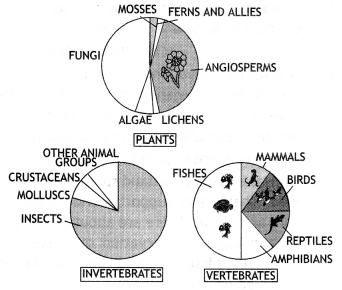
Representation of global biodiversity of major taxa of plants, invertebrates, and vertebrates
Question 9.
Elaborate how invasion by an alien species reduces the diversity of an area.
Answer:
This may be due to any of the following reasons:
- Fast-growing species may compete with less vigorous local species.
- Alien species will proliferate in that area if their natural pests and predators are not present.
- By amensalism, i.e. it may harm local species by producing chemicals.
- Such species may grow vigorously and may form conditions unfavorable for the growth of local native species like Eichhornia.
Question 10.
Broadly classify the extinction processes.
Answer:
Classification of extinction processes:
- Natural extinction: It is due to a change in environmental conditions. It is at a very slow rate.
- Mass extinction: Mass extinction occurs due to catastrophes. In this case, a large number of species became extinct in millions of years.
- Anthropogenic extinction: Extinction of species is due to man’s activities. It is occurring in a short period of time.
Question 11.
What is an endangered species? Give an example of an endangered plant and animal species each.
Answer:
An endangered species is a population of organisms, which is facing a high risk of becoming extinct because
- Its number is very low.
- It is threatened by changing environment.
- It is facing a predator threat. Endangered plant species-Venus fly trap Endangered animal species-Siberian tiger.
Question 12.
List the benefits of protected areas for the conservation of biodiversity.
Answer:
Benefits of protected areas:
- Maintaining viable populations of all native species and subspecies.
- Maintaining the number and distribution of communities and habitats, and conserving the genetic diversity of all the present species.
- Preventing the human-caused introduction of alien species.
- Making it possible for species/ habitats to shift in response to changes in the environment.
Question 13.
List the biosphere reserves of India.
Answer:
Biosphere reserves of India:
- Nanda Devi
- Nokrek
- Manas
- Dibru Saikhowa
- Dean Debang
- Sunderbans
- Gulf of Mannar
- Nilgiri
- Great Nicobar
- Simitipal
- Ichanghendzonga
- Pachmarhi
- Agasthyamatai
Question 14.
Write a note on sacred forests.
Answer:
Sacred forests: These are forest patches protected by tribal communities in India and other Asian countries due to religious belief. These are undisturbed forests having no human intervention and frequently surrounded by highly degraded landscapes. Such forests are located in many states of India and have a number of rare, endangered, and endemic species. Likewise, Khecheopalri which contains several aquatic fauna and flora is declared as a sacred lake in Sikkim.
Question 15.
Differentiate between in situ and ex situ conservation. (CBSE Delhi 2011, Sample Paper 2020)
Answer:
Differences between in situ conservation and ex situ conservation:
| In situ Conservation | Ex-situ Conservation |
| 1. It is the conservation of endangered species in their natural habitat. | 1. It is the conservation of endangered species outside their natural habitat. |
| 2. Protection from predators is ensured. | 2. Protection from all adverse factors is ensured. |
| 3. The population recovers in its natural habitat. | 3. Offsprings produced in captive breeding are released in natural habitats for acclimatization. |
Question 16.
(i) Explain the ‘Ex situ’ conservation of Biodiversity. How is the In situ conservation different from it? (CBSE Delhi 2018 C)
Answer:
- It is the conservation of endangered species outside their natural habitat.
- Protection from all adverse factors is ensured.
- Offsprings produced in captive breeding are released in natural habitats for acclimatization.
(ii) Which one of the two in situ or ex situ biodiversity conservation measures helps the larger number of species to survive? Explain. (Outside Delhi 2019)
Answer:
- In situ, biodiversity conservation measures will help the larger number of species to survive.
- In situ is onsite conservation, i.e. it is the conservation of endangered species in their natural habitat. Whereas ex situ conservation is the conservation of endangered species outside their natural habitat.
- To conserve species in their natural habitat, the entire ecosystem has to be conserved including all the biotic and abiotic components of the ecosystem that are associated with the target species.
- In situ conservation helps in the restoration of degraded ecosystems and habitats that are means of conserving genetic resources species ecosystems and landscapes, without uprooting the local people.
Question 17.
Compare the ecological biodiversity existing in India and Norway. (CBSE Outside Delhi 2019)
Answer:
At the ecosystem level, India is far more diverse than the Scandinavian country Norway with its deserts, rain forests, mangroves, coral reefs, wetlands, estuaries, and alpine meadows.
Question 18.
What are Ramsar sites?
Answer:
Ramsar sites are wetlands spread over a wide area. These sites support a wide range of flora and fauna. There are about 25 Ramsar sites in India. Conservation of wetland is the main mission. World wetland day is observed on 2nd February.
Question 19.
Among the ecosystem services are control of floods and soil erosion. How is this achieved by the biotic components of the ecosystem?
Answer:
- Earth’s rich biodiversity is vital for indirect benefits like control of floods and soil erosion. Species richness checks soil erosion by binding the soil particles thereby reducing the rate of water velocity, hence reducing the chances of floods.
- The roots of plants make the soil porous.
Question 20.
The species diversity of plants at 22% is much less than that of animals. What could be the explanation of how animals achieved greater diversification?
Answer:
- Since plants cannot move from their predators and harsh treatment of environmental conditions, thus have become extinct.
- As the animals can move away from such conditions, the evolution of favorable characters has taken place in them.
Question 21.
Suggest two practices giving one example of each that helps protects rare or threatened species. (CBSE 2017)
Answer:
- By using the cryopreservation (preservation at -196°C) technique, sperms, eggs, tissues, and embryos can be stored for long period in gene banks, seed banks, etc.
- Plants are propagated in vitro using tissue culture methods.
Question 22.
Pollen banks are playing a very important role in promoting plant breeding programs the world over. How are pollens preserved in the pollen banks? Explain. How are such banks benefitting our farmers? Write any two ways. (CBSE Delhi 2019)
Answer:
Preservation of pollen is done in the pollen banks: Pollen grains of a large number of species can be preserved for years in liquid nitrogen at a temperature of -196°C. It is called cryopreservation. Pollen remains viable for a very long duration.
It helps to conserve a large number of species. It can prevent the complete extinction of many species and help to maintain biodiversity.
Question 23.
What is cryopreservation? Mention how it is used in the conversation of biodiversity. (CBSE Outside Delhi 2019)
Answer:
Cryopreservation or cryo conservation is a process where organelles, cells, tissues, extracellular matrix, organs, or any other biological structures are preserved by cooling to very low temperatures, i.e. 196°C in liquid nitrogen.
Role in the conservation of biodiversity: It is an ex-situ method of conservation of biodiversity. Gametes of threatened species are preserved in viable and fertile conditions for long period. They can be used as and when required.
Biodiversity and Conservation Important Extra Questions Long Answer Type
Question 1.
What is biodiversity? Why has it become important recently?
Answer:
Biodiversity: The term biodiversity was coined by W.G. Rosen in 1985. It is the occurrence of different kinds of organisms and the complete range of varieties adapted to different climates, environments, and areas being constituents of food chains and food webs of biotic interrelationships. Biodiversity refers to the totality of genes, species, and ecosystems of a region. Biodiversity differs from place to place.
Significance of biodiversity: As there is a continuous loss of biodiversity due to increasing population, resource consumption, urbanization, and pollution, it is important to conserve it. The basic reason for concern is that biodiversity is being lost even before it attains its size. Loss of biodiversity would check the evolutionary capability of biota to cope up with an environmental loss.
Question 2.
Explain what is meant by species diversity? (CBSE 2010)
Answer:
Species diversity. The diversity includes the whole range of organisms found on earth. The number of identified species worldwide is between 1.7 and 1.8 million. However, the estimates of total known species maybe 50 million. A large number of plant and animal species are yet to be identified. There are many more species present in the tropics.
The two important measures of species diversity are:
- Species richness: It refers to the number of species per unit area.
- Species evenness: It refers to the relative abundance with which each species is represented in an area.
- The variety and number of individuals determine the level of diversity of an ecosystem.
- The Western Ghats have a greater diversity of amphibian species than the Eastern Ghats.
Question 3.
What is genetic diversity? Explain. (CBSE 2010)
Answer:
Genetic diversity:
- The greater the genetic diversity among organisms of a species, the more sustenance it has against environmental perturbations. The genetically uniform populations are highly prone to diseases and harsh environments.
- The genetic variation shown by Rauwolfia can be in terms of the concentration and potency of the chemical reserpine.
There are more than 50,000 genetically different strains of rice and 1,000 varieties of mango in India.
Question 4.
Describe the ecological role of biodiversity.
Answer:
The ecological role of biodiversity:
- Biodiversity provides plant pollinators, predators, decomposers and contributes to soil fertility.
- It helps in the purification of air and water, management of flood, drought, and other environmental disasters,
- Ecosystems with more diversity can withstand the environmental challenges better because genetically diverse species present in the ecosystem will have different tolerance ranges for a given environmental stress, hence they cannot be easily eliminated by any single stress at a time. However, if the ecosystem contains only a few species, it will become a fragile or unstable ecosystem.
- The species with high genetic diversity and the ecosystems with high biodiversity have a greater capacity for adaptation against environmental perturbations.
Question 5.
Write a short note on three perspectives of community and ecosystem level of diversity.
Answer:
The three perspectives of diversity at the level of community and ecosystem are:
- Alpha diversity
- Beta diversity and
- Gamma diversity.
1. Alpha diversity: It refers to the diversity of organisms sharing the same community. It has been found that there is an increase in diversity with a decrease in latitude.
2. Beta diversity: The rate of replacement of species along a gradient of habitat or communities is called beta diversity.
3. Gamma diversity: It is the rate at which additional species are found as a replacement in different localities of the same habitat.
Question 6.
Give an account of global biodiversity.
Answer:
Global biodiversity:
1. According to IUCN (2004), the total number of plant and animal species described is about 1.5 million. The species inventories for taxonomic groups in temperate countries/ regions are more complete than those in tropical countries/regions.
2. A more conservative and scientifically sound estimate has been made by Robert May; it puts the global species diversity at about seven million. More than 70% of all the species recorded are animals and plants account for about 22%; 70% of the animals are insects.
These estimates do not give any figure for prokaryotes for the following reasons:
- The conventional taxonomic methods are not suitable/sufficient for identifying these microbial species,
- Many of these species cannot be cultured under laboratory conditions.
- Biochemical and molecular biology techniques would put their diversity into millions.
Question 7.
Describe the species-area relationship.
Answer:
Species-Area relationship
Alexander Von Humboldt has observed that within a region, species richness increased with the increased explored area, but only up to a limit.
The relationship between species richness and area for a number of taxa like angiosperms plants, freshwater fishes, and birds is found to be a rectangular hyperbola.
On a log scale, the relationship becomes linear (straight line) and is described by the equation.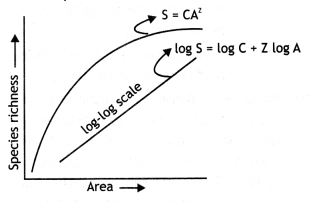
Species area relationship
log S = log C + Z log A, where,
S = Species Richness
Z = Slope of the line (regression coefficient)
A = area and
C = y-intercept Ecologists have found out that the value of the Z-line ranges between 0.1 and 0.2 irrespective of the taxonomic group or the region.
But this analysis in very large areas like a continent, the Z value ranges between 0.6 and 1.2. The Z value for frugivorous birds and mammals in the tropical forests is found to be 1.15.
Question 8.
What kinds of threats to biodiversity may lead to its loss?
Answer:
Threats to biodiversity:
- Habitat loss. In order to utilize the resources there occurs the destruction of habitat.
- Disturbance and pollution. A large number of organisms are destroyed due to natural disturbances such as fire, tree fall, defoliation by insects. Man’s activities are causing pollution.
- Introduction of exotic species. The introduction of new species into an area causes disturbances that may lead to the disappearance of native species.
- The extinction of species is a natural process.
Question 9.
Give a brief account of the loss of biodiversity at the global level.
Answer:
The colonization of the tropical Pacific Islands by human beings has led to the extinction of more than two thousand species of native birds.
IUCN red list (2004) documents the extinction of 784 species in the last 500 years that include 359 invertebrates, 338 vertebrates, and 87 plants.
Some of the animals that have become extinct in recent times are given below:
- Steller’s sea cow (Russia)
- Dodo (Mauritius)
- Thylacine (Australia)
- Quagga (Africa)
- Three subspecies (Bali, Javan, Caspian) of the tiger.
- 27 species have become extinct in the last twenty years alone.
- Amphibians are more vulnerable to extinction.
Though about 15,5000 species are facing extinction, at present following the face the threat of extinction:
- 31% of gymnosperms
- 32% of amphibians
- 12% of bird species
- 23% of mammals
Since the origin of life on earth and evolution, three have been five episodes of mass extinction, but the current rate of extinction is 100-1000 times faster than them, due to human activities.
Question 10.
Write an explanatory note on the efforts for the conservation of biodiversity in India.
Answer:
Conservation of biodiversity in India:
- In situ conservation is carried out through biosphere reserves, national parks and wildlife sanctuaries, and other protected areas by the Ministry of Environment and Forest reserve.
- The National Bureau of Plants, Animals, and Fish Genetic Resources collects, conserves and stores germplasms of plants and animals in seed gene banks or field gene banks.
- Botanical Gardens and Zoological Parks have a large collection of plant and animal species.
Question 11.
Explain the following:
(a) IUCN Red List
Answer:
IUCN Red List: It is a catalog of taxa that are facing the risk of extinction.
The uses of the red list are:
- developing awareness about the threat of loss of biodiversity
- identification and documentation of endangered species
- providing a global index of the decline of biodiversity
- defining conservation.
IUCN has recognized eight red list categories of species.
They are:
- Extinct
- Extinct in wild
- Critically endangered
- Endangered
- Vulnerable
- Lower risk
- Data deficient and
- Not evaluated.
The 2000 red list contains an assessment of more than 18,000 species, 11,000 of which are threatened.
(b) Protected areas.
Answer:
Protected areas: These areas are land or sea and are dedicated to the protection and maintenance of biological diversity. They include National Parks, Sanctuaries, and Biosphere reserves. As of September 2002, India has 581 protected areas.
National parks: A national park is an area that is strictly reserved for the betterment of the wildlife and where activities like forestry, grazing, or cultivation are not permitted. In these parks, even private ownership rights are not allowed. Sanctuaries. A sanctuary is a protected area that is reserved for the conservation of only animals and human activities like harvesting of timber, collection of minor forest products and private ownership is allowed so long as they do not interfere with the well-being of animals.
A biosphere reserve is a specified area in which multiple uses of the land are permitted by dividing it into certain zones, each zone is specified for a particular activity.
Question 12.
What is a biosphere reserve? Show the zonation of the biosphere reserve.
Answer:
Biosphere Reserves. Biosphere reserves are a special category of protected areas of land and/or coastal environments, wherein people are an integral component of the system. These are representative examples of natural biomes and contain unique biological communities.
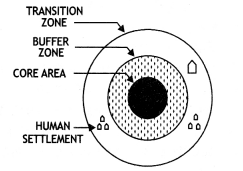
The zonation in a terrestrial Biosphere Reserve
Question 13.
Show the in situ and ex situ approaches of conserving biodiversity in India.
Answer:
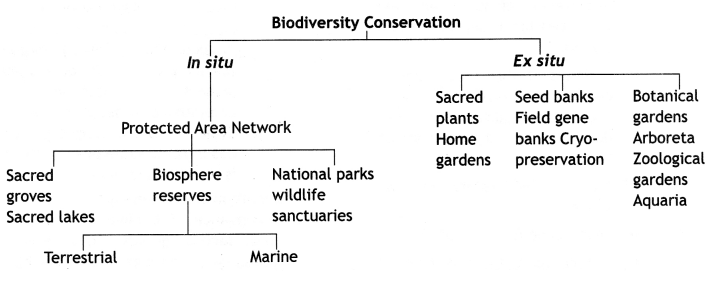
The In situ and ex situ approaches of conserving biodiversity in India.
Question 14.
Write critical notes on the following:
1. Hot spots of biodiversity.
2. Ex-situ conservation.
3. India’s effort in biodiversity. (CBSE Delhi 2019)
Or
States any two criteria for determines biodiversity hotspots. Name any two hotspots of India. (CBSE Sample Paper 2020)
Answer:
1. Hot spots of biodiversity: The concept of ‘Hotspots’ was developed by Norman Myers (1988) to designate specific areas for in situ conservation. The hotspots are the richest and most threatened reservoirs of plant and animal life on earth.
The criteria for determining hotspots are:
(a) Number of endemic species.
(b) Degree of threat which is measured in terms of habitat loss.
There are 25 hotspots in the world out of which two are in India. They are the Western Ghats and Eastern Himalayas.
Hotspot of Eastern Himalayas is active centers of evolution and rich in diversity of flowering angiosperms. The Western Ghats have semi-evergreen forests.
The Western Ghats include two main centers of biodiversity:
- Aqastyamatai hills
- Silent valley.
2. Ex-situ conservation: It means maintenance of off-site collections either in gardens by farmers, botanical garden or storing seeds, genes, pollen, tissue culture, etc. The rare plants have been found to flourish in large numbers under the care and protection of gardeners and nature lovers.
The farmers have been maintaining genetic diversity (enormous varieties) of crop plants since ancient times by saving seeds or other components for the next plantings.
Collection of samples of cultivated and wild varieties of plants and storing them in botanical gardens is another method of conservation of germplasm.
In seeds, the living material remains in a metabolically suspended state. When the seeds are to be stored for longer periods, it is necessary to avoid conditions that favor respiration and enzymatic action.
Advantages of ex situ conservation:
- Threatened and endangered species can be conserved.
- Genetic strains of commercially important plants can be preserved for a long time (seed banks).
- Gametes of threatened species can be preserved in viable and fertile conditions for a longer duration by the cryopreservation technique.
- Loss of biodiversity can be reduced.
- Eggs can be fertilized in-vitro.
- Can conserve a large number of species and the aesthetic value.
3. India’s effort in biodiversity conservation: India has greatly contributed to the conservation of biodiversity owing to its great utility and need for conservation.
The following measures have been taken for this purpose:
(a) Setting up of bodies like Indian Board for Wildlife, Bombay Natural History Society, etc.
(b) Observation of the first week of October as national wildlife week.
(c) introduction of the Wildlife Protection Act in 1972.
(d) Setting up of sanctuaries, national parks, and biosphere reserves.
Question 15.
(i) Why should we conserve biodiversity?
Answer:
We should conserve biodiversity for the following reasons:
(a) Narrow utilitarian arguments Human beings draw direct economic benefits from nature like food, firewood, fiber, construction materials, industrial products, medicines, etc.
(b) Broadly utilitarian arguments. Biodiversity plays a major role in maintaining and sustaining the supply of goods and services
- Amazon forests provide 20% of the oxygen present in the atmosphere.
- The ecosystem provides pollinators.
(c) Ethical reasons. Every organism has intrinsic value even if there is no economic value. Conservation of biodiversity.
(ii) Explain the importance of biodiversity hotspots and sacred groves. (CBSE Delhi 2016)
Answer:
Importance of biodiversity hotspots and sacred groves They provide protection of species richness and a high degree of endemism in natural habitat. Hotspots are regions of the high level of species in their natural habitat. Sacred groves are forest tracts set aside and all trees and wildlife within the area are given total protection.
Question 16.
What is the ES Nino effect? Explain how it accounts for biodiversity loss. (CBSE Delhi 2011)
Answer:
1. El Nino: It is an abnormal warming of surface ocean waters in the eastern tropical Pacific. It is called the Southern Oscillation. The Southern Oscillation is the see-saw pattern of reversing surface air pressure between the eastern and western tropical Pacific.
When the surface pressure is high in the eastern tropical Pacific it is low in the western tropical Pacific, and vice versa. Because ocean warming and pressure reversals are, for the most part, simultaneous, scientists call this phenomenon the El Nino/Southern Oscillation or ENSO for short.
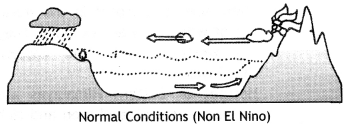
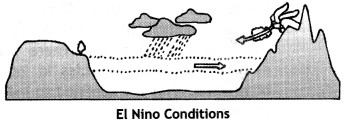
El Nino Effect
Unfortunately not all El Ninos are the same nor does the atmosphere always react in the same way from one El Nino to another. This is why NASA’s Earth scientists continue to take part in international efforts to understand El Nino events. Hopefully, one day scientists will be able to provide sufficient warning so that we can be better prepared to deal with the damages and changes that El Nino causes in the weather.
Question 17.
Can you think of a situation where we deliberately want to make a species extinct? How would you justify it? (CBSE Delhi 2011)
Answer:
- Human effort to eradicate disease-causing organisms (Poliovirus).
- This situation may appear when alien species are introduced unintentionally or deliberately into an area. Some of them may become invasive and cause damage to indigenous species.
- Example: Nile perch introduced into lake Victoria in East Africa led to the extinction of 200 species of cichlid fish in the lake. The introduction of African catfish Clarias gariepinus for aquaculture is threatening the indigenous catfishes in rivers of India.
Question 18.
Explain biodiversity as sources of food and improved varieties.
Or
State the uses of biodiversity in modern agriculture. (CBSE 2011)
Answer:
Use of biodiversity in agriculture:
- As a source of new crops.
- As source material for breeding varieties.
- As a source of new biodegradable pesticides.
Only 20% of total plant species are cultivated to produce 85% of the world’s food.
Wheat, corn, and rice, the three major carbohydrate crops, yield nearly two-third of the food sustaining the human population. Fats, oils, fibers, etc. are other uses for which more and more new species need to be investigated.
Question 19.
(i) “India has a greater ecosystem diversity than Norway.” Do you agree with the statement? Give reasons in support of your answer.
Answer:
Yes. I agree with the statement. India has greater ecosystem diversity than Norway because it has deserts, rain forests, mangroves, coral reefs, wetlands, estuaries, and alpine meadows.
(ii) Write the difference between genetic biodiversity and species biodiversity that exists at all the levels of biological organization. (CBSE 2018)
Answer:
Genetic diversity:
- Genetic diversity is the total number of genetic characteristics in the genetic makeup of a species.
- A single species might show high diversity at the genetic level, e.g. Man: Chinese, Indian American, African, etc. India has more than 50,0 genetically different strains of rice and 1,000 varieties of mango.
- Genetic diversity allows species to adapt to changing environments. This diversity aims to ensure that some species survive drastic changes and thus carry on desirable genes.
Specific diversity:
- Specific diversity is the ratio of one species population over a total number of organisms across all species in the given biome. ‘Zero’ would be infinite diversity, and ‘one’ represents only one species present.
- Species diversity is a measure of the diversity within an ecological community that incorporates both species richness, i.e. the number of species in a community and the evenness of species.
Question 20.
Give the approximate numbers of species that have been described and identified all over the world.
Answer:
An approximate number of species that have been described and identified from all over the World:
| Group | Number of species |
| Higher plants | 2,70,000 |
| Algae | 40,000 |
| Fungi | 72,000 |
| Bacteria (including cyanobacteria) | 4,000 |
| Viruses | 1,550 |
| Mammals | 4650 |
| Birds | 9700 |
| Reptiles | 7150 |
| Fish | 26,959 |
| Amphibians | 4780 |
| Insects | 10,25,000 |
| Crustaceans | 43,000 |
| Molluscs | 70,000 |
| Nematodes and worms | 25,000 |
| Protozoa | 40,000 |
| Others | 1,10,000 |
Question 21.
Give an account of latitudinal gradients of biodiversity.
Answer:
Latitudinal gradients of biodiversity:
- Species diversity decreases from the equator towards the poles.
- The tropics (between 23.5°N to 23.5°S) harbor more species than temperate and polar regions.
- For example, the Western Ghats have a greater amphibian species diversity than the Eastern Ghats. There are more than 2,00,000 species in India of which several are confined to India (endemic).
- For example, Columbia situated near the equator has about 1400 species of birds, while Hew York (41 °N) has 105 species, Greenland (70°N) has about 56 species and India (in the equator region) has 1200 species.
- The number of species of vascular plants in the tropics is about ten times more than that of temperate forests.
- The Amazonian rain forest in South America has the greatest biodiversity on earth; it harbors about 40,000 species of plants, 1,25,0 species of insects, 3000 fishes, 427 amphibians, 378 reptiles, 1300 birds, and 427 mammals.
Question 22.
Discuss the characteristics of India’s biodiversity.
Answer:
Characteristics of India’s biodiversity. Biodiversity is not uniformly distributed in space and time. It is rich in tropics.
India’s biodiversity is characterized by the following:
1. India contains 10 bio-geographic regions which include the Himalayan, Trans-Himalayan, the Indian desert, the Semi-arid zone, the Western Ghats, the Deccan Peninsula, the Gangetic Plain, North-East India, and the Islands and Coasts which possess different biodiversity levels.
2. India is one of the world’s 12 leading biodiversity centers of the origin of cultivated plants.
3. Though India has only 2.4% of the land area of the world, it has 8.1% of the global species biodiversity.
4. There are about 45,000 species of plants and 90,000-1,00,000 species of animals; many more species are yet to be discovered and named.
5. If we apply Robert May’s global estimate that only 22% of the total species have been recorded, India probably has more than 1,00,000 species of plants and 3,00,000 species of animals to be discovered and described.
6. India has five natural world heritage sites, 14 biosphere reserves, 89 national parks, 492 wildlife sanctuaries, and 2 hotspots. Heritage sites are places that attract tourists.
7. About 33 percent of the country’s recorded flora are endemic to India and concentrated in the North-East, Western Ghats, North-West Himalaya, and Andaman and Nicobar islands.
Question 23.
(a) List any two ways biodiversity loss affects any region.
Answer:
Effects of biodiversity loss:
- The decline in plant production
- Lowered resistance to environmental perturbations such as drought
- Increased variability in certain ecosystem processes.
(b) Explain any two causes of biodiversity loss, with the help of suitable examples. (CBSE Outside Delhi 2019)
Answer:
Causes of loss of biodiversity:
(A) Habitat fragmentation:
- Habitat loss and fragmentation create barriers that limit the potential of species to disperse and colonize new areas.
- Species get divided into smaller populations that are unable to sustain themselves.
- Migratory birds lose their seasonal habitats.
- It increases edge areas thus making the species more vulnerable to predators as well as wind and fire.
Thus there is the loss of biodiversity because a large number of animals, e.g. elephants, lions, bears, and large cats require big territories to move around and live in. Likewise, some birds reproduce successfully only in deep forests.
(B) Introduction of exotic species leading to endangering the species Exotic species are having a large impact especially in the island ecosystem, which harbor much of the world’s threatened biodiversity.
A few examples are:
- Nile perch, an exotic predatory fish introduced into Lake Victoria (South African), threatens the entire ecosystem of the lake by eliminating several native species of the small Cichlid fish species that were endemic to this freshwater aquatic system.
- Water hyacinth clogs rivers and lakes and threatens the survival of many aquatic species in lakes and river flood plains in several tropical countries including India.
Question 24.
List the uses of biodiversity.
Answer:
Uses of biodiversity:
- As a source of food and improved varieties.
- As a source of drugs and medicines.
- Aesthetic and cultural benefits. Examples of aesthetic rewards include ecotourism, bird watching, wildlife, pet-keeping, gardening, etc. Throughout human history, people have related biodiversity to the very existence of the human race through cultural and religious beliefs.
- Biodiversity is essential for the maintenance and sustainable utilization of goods and services from the ecological systems as well as from individual species.
Question 25.
What are the uses of IUCN Red list categories?
Answer:
Uses of Red list categories:
- Developing awareness about the importance of threatened biodiversity.
- Identification and documentation of endangered species.
- Providing a global index of the decline of biodiversity.
- Defining conservation priorities at the local level and guiding conservation action.
Question 26.
How is the “sixth episode of extinction” of species on earth, now currently in progress, different from the five earlier episodes? What is it due to? Explain the various causes that have brought about this difference.
Answer:
Earth is heading for sixth extinction due to human activities.
Anthropogenic extinction. An increasing number of species are disappearing from the face of the earth due to human activities. This man-made mass extinction represents a very severe depletion of biodiversity, particularly because it is occurring within a short period of time.
It has been estimated at World Conservation Monitoring Centre that about 384 plant species (mostly phanerogams) and 533 animal species (mostly vertebrates) have become extinct since the year 1600. This rate of extinction of species is 1000 to 10,000 times higher than the earlier rate.
A few interesting points of extinction of species noticed are:
- Tropical forests are losing 14,000-40,0 species per year, i.e. at the rate of 2-5 species per hour.
- Near about 50 percent of species may become extinct at the end of the 21st century, if the present rate does not retard.
- Loss of 17,000 endemic plant species and 350,000 endemic animals may take place in the near future from 10 high diversity localities in tropical forests.
It seems that earth is heading for the sixth extinction.
Causes:
- Increase in human population and settlements.
- Hunting.
- ver-exploitation of natural resources.
- Destruction of habitat.
Question 27.
Give three hypotheses for explaining, why tropics show the greatest levels of species richness.
Answer:
The following three hypotheses explain how tropics show the greatest level of species richness:
1. Undisturbance in the tropics: Speciation is usually a function of time, unlike temperate areas subjected to frequent glaciations in the past. This type of disturbance has not occurred or remained relatively undisturbed in tropical latitudes for millions of years. Tropical regions, thus, got a long evolutionary time for species diversification.
2. Constancy in season: In tropical regions, the environment is more constant, less seasonal, and predictable. This is not so in temperate regions. Due to this stability and constancy, niche speciation takes place at a faster rate and leads to species richness.
3. Availability of more solar energy: Due to more availability of solar energy in the tropics, productivity is higher. This contributes indirectly to greater species diversity.
Question 28.
How is biodiversity important for Ecosystem functioning?
Answer:
Importance of biodiversity to the ecosystem:
- Ecologists believe that communities with more species tend to be more stable than those with fewer species,
- A stable community has the following attributes.
(a) It shall not show too many variations in the year-to-year productivity.
(b) It must be either resistant or resilient to seasonal disturbances.
(c) It must be resistant also to invasion by alien species. - David Tilman had shown through his ecology experiments using outdoor plots the following features.
(a) The plots with more species showed less year-to-year variation in the total biomass.
(b) Plots with increased diversity showed higher productivity. - It is now realized that species richness and diversity are essential for ecosystem health as well as the survival of the human race on the earth.
Question 29.
What are sacred groves? What is their role in conservation? (CBSE Outside Delhi 2016)
Answer:
Sacred Groves are the secret forest patches around places of worship. They are of great religious value among tribal communities.
In such cases, nature is protected by prevailing religious and cultural traditions. Here tracts of forests are set aside and all plants and animals are venerated and provided with complete protection. Examples of sacred groves are Khasi and Jaintia hills in Meghalaya, Aravali hills in Rajasthan, Western Ghat regions of Karnataka, Maharashtra and Sargiya, Chanda and Bastar areas of M.P. In Sikkim, Khecheopalri lake is declared sacred lake by people, thus protecting the aquatic flora and fauna.
Role in conservation. Many rare and threatened plants have been protected in the sacred groves of Meghalaya. Such areas have been found to be most undisturbed and they are usually surrounded by the most degraded landscapes.
Question 30.
What is Ramsar’s mission? Explain the ‘Wise Use concept’?
Answer:
The Ramsar mission.
The Convention’s mission is “the conservation and wise use of all wetlands through local and national actions and international cooperation, as a contribution towards achieving sustainable development throughout the world”.
The Convention uses a broad definition of the types of wetlands covered in its mission, including lakes and rivers, swamps and marshes, wet grasslands and peatlands, oases, estuaries, deltas and tidal flats, near-shore marine areas, mangroves, and coral reefs, and human-made sites such as fish ponds, rice paddies, reservoirs, and salt pans. The Wise Use concept At the center of the Ramsar philosophy is the “wise use” concept.
The wise use of wetlands is defined as “the maintenance of their ecological character, achieved through the implementation of ecosystem approaches, within the context of sustainable development”. “Wise use” therefore has at its heart the conservation and sustainable use of wetlands and their resources, for the benefit of humankind.
Ramsar commitments The Ramsar Contracting Parties, or the Member States, have committed themselves to implement the “three pillars” of the Convention: to designate suitable wetlands for the List of Wetlands of International Importance (“Ramsar List”) and ensure their effective management; to work towards the wise use of all their wetlands through national land-use planning, appropriate policies and legislation, management actions, and public education; and to cooperate internationally concerning transboundary wetlands, shared wetland systems, shared species, and development projects that may affect wetlands.
Question 31.
Sanctuaries are tracts of land where animals are protected from all types of exploitation. Private ownership is permitted. Collection of minor forest products are allowed.
(i) How many sanctuaries are present in India?
Answer:
India has 551 sanctuaries.
(ii) How much land area they cover?
Answer:
3.6% of geographical area.
(iii) Name any three sanctuaries.
Answer:
(a) Keoladeo Ghana Bird Sanctuary, Bharatpur, Rajasthan
(b) Sultanpur Lake Bird Sanctuary, Gurgaon, Haryana
(c) Periyar Sanctuary, Kerala
(iv) List any three human activities which are allowed In sanctuaries.
Answer:
(a) CoLLection of forest products
(b) Harvesting of timber
(C) Tilling of Land
(d) Private ownership of Land.
Question 32.
Make a list of Ramsar Sites In India.
Answer:
A-List of Ramsar sites in India is as following:
| Sr Name of Ramsar Site | Location |
| 1. Ashtamudi Wetland | Kerala |
| 2. Bhitarkanika Mangroves | Odisha |
| 3. Bhoj Wetland | Madhya Pradesh |
| 4. Chandra Taal | Himachal Pradesh |
| 5. Chitika lake | Odisha |
| 6. Deepor Beet | Assam |
| 7. East Calcutta Wetlands | West Bengal |
| 8. Harike Wetland | Punjab |
| 9. Hokersar Wetland | Jammu and Kashmir |
| 10. Kanji Wetland | Punjab |
| 11. Keoladeo National Park | Rajasthan |
| 12. Kolleru lake | Andhra Pradesh |
| 13. Loktak lake | Manipur |
| 14. Nalsarovar Bird Sanctuary | Gujarat |
| 15. Point Calimere Wildlife and Bird Sanctuary | Tamil Nadu |
| 16. Pong Dam lake | Himachal Pradesh |
| 17. Renuka Wetland | Himachal Pradesh |
| 18. Ropar | Punjab |
| 19. Rudrasagar lake | Tripura |
| 20. Sambhar lake | Rajasthan |
| 21. Sasthamkotta lakes | Kerala |
| 22. SurinsarMansar lakes | Jammu and Kashmir |
| 23. Tsomoriri | Jammu and Kashmir |
| 24. Upper Ganga River (Brljghat to Narora Stretch) | Uttar Pradesh |
| 25. Vembanad-Kol Wetland | Kerala |
| 26. Wular lake | Jammu and Kashmir |
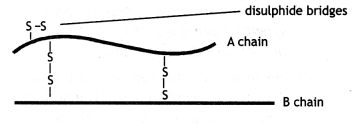
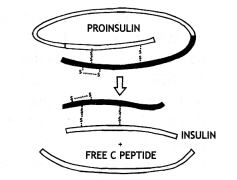
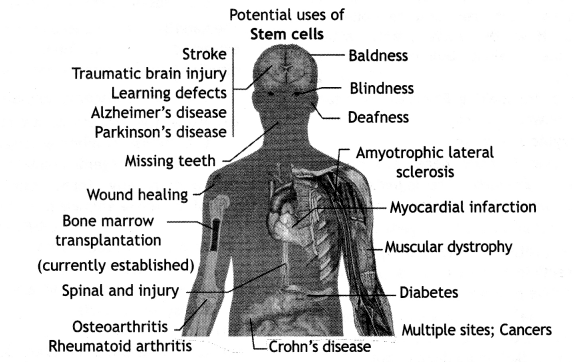

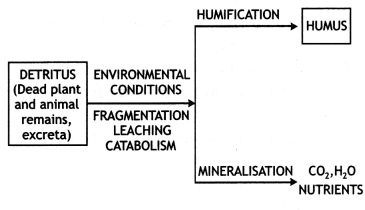 Processes involved in the decomposition of detritus
Processes involved in the decomposition of detritus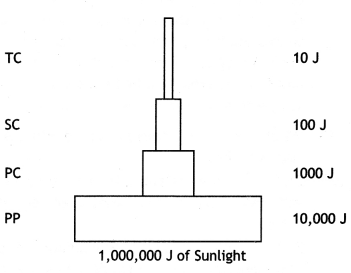
 Pyramid of biomass
Pyramid of biomass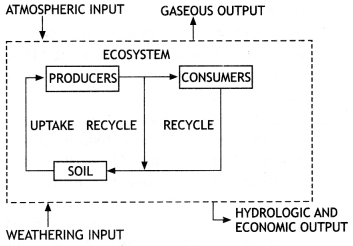
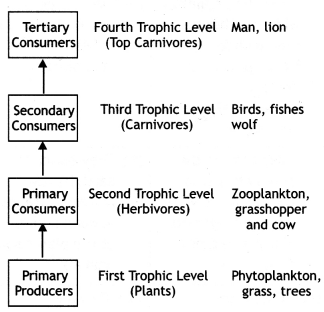
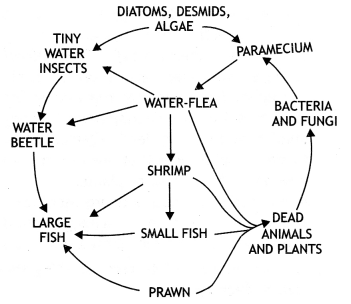

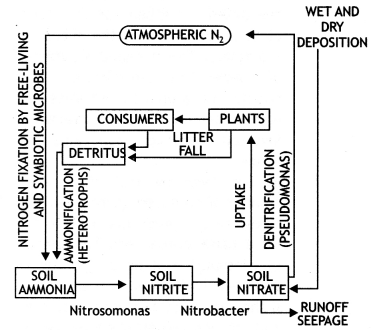
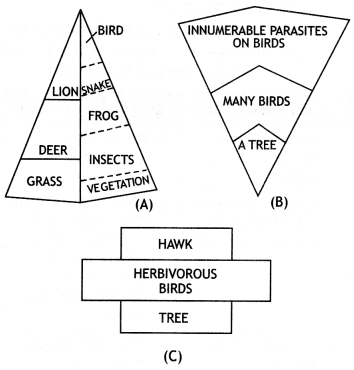
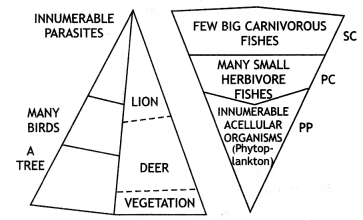
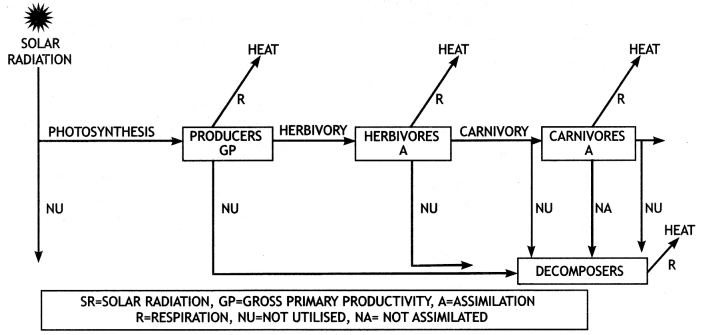
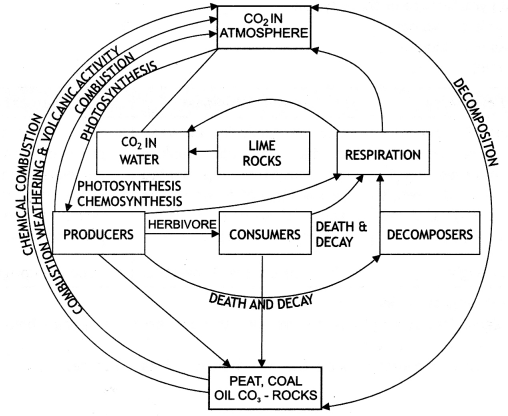
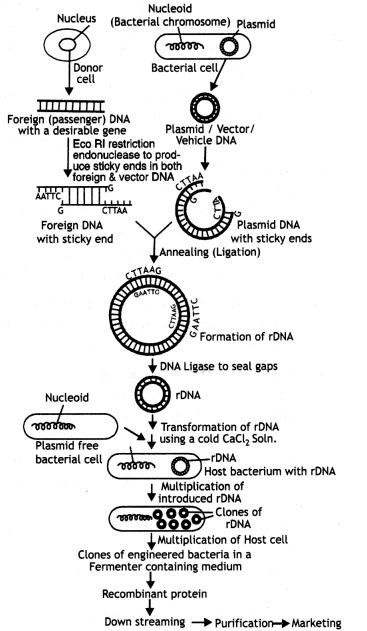
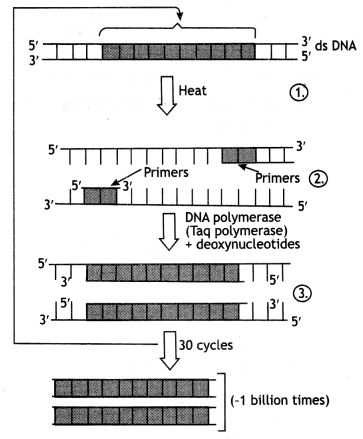
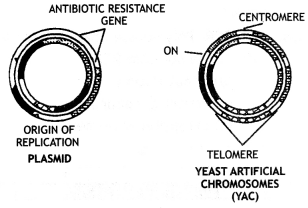
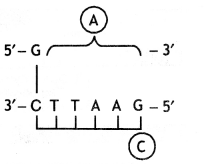
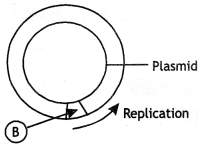

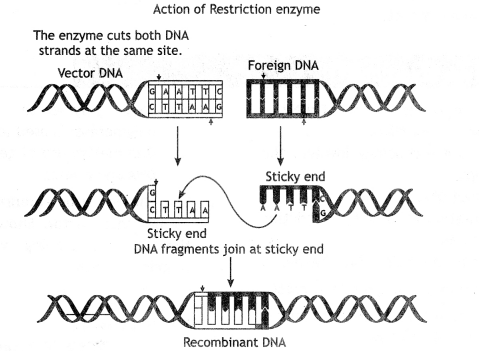
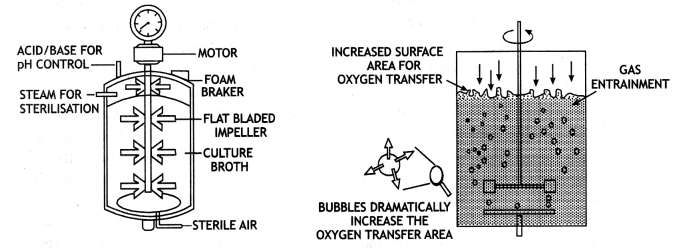
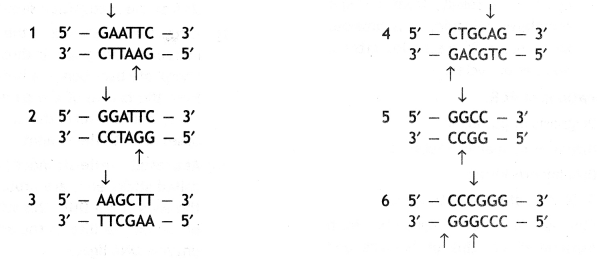


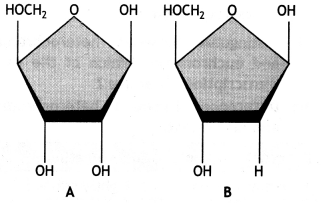


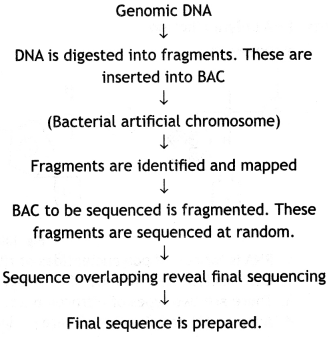
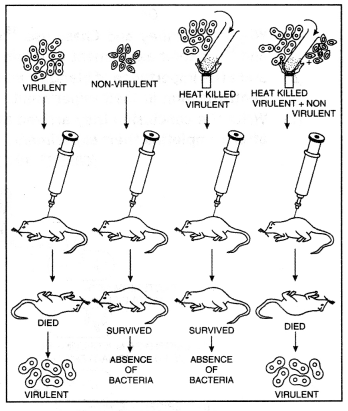
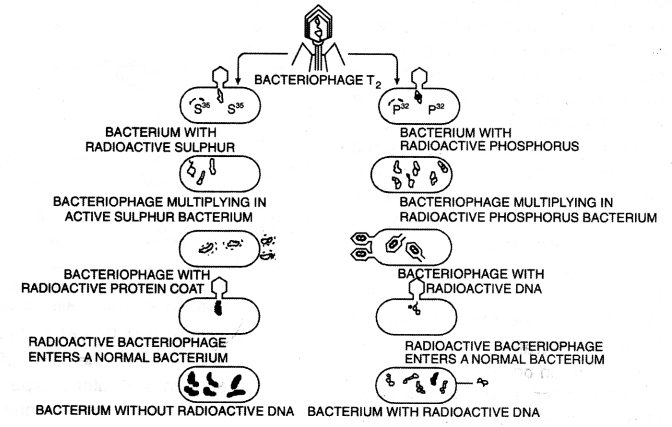
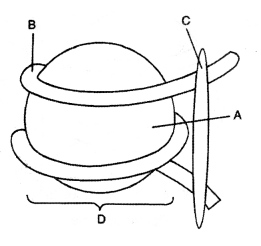
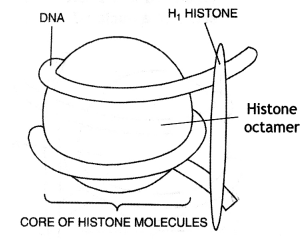
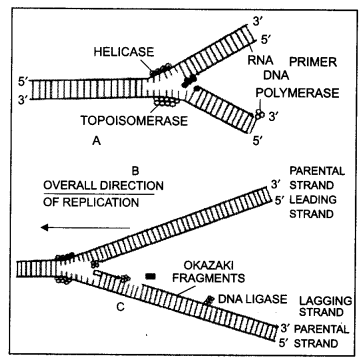 Continuous and discontinuous synthesis of DNA.
Continuous and discontinuous synthesis of DNA.
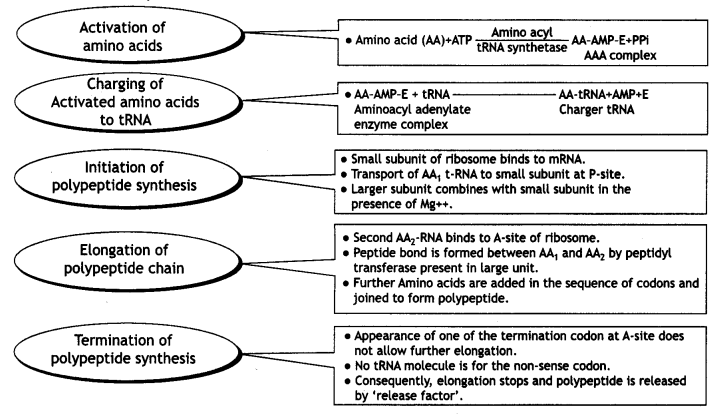
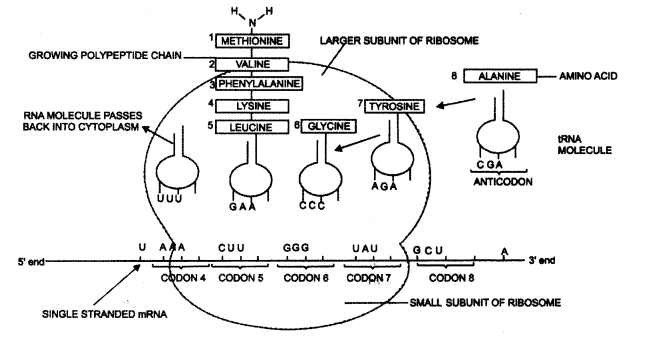
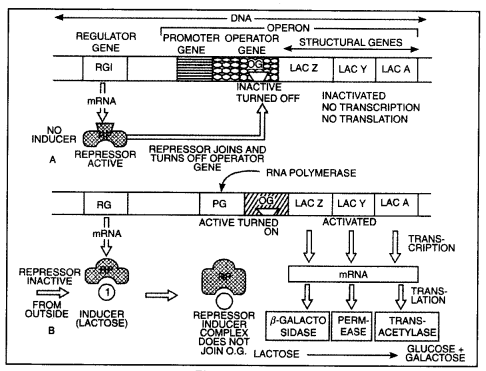
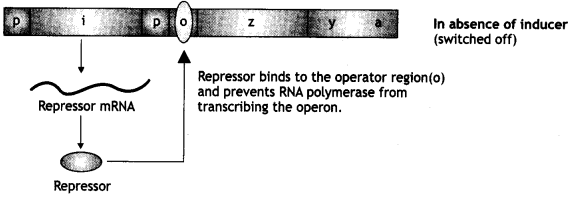
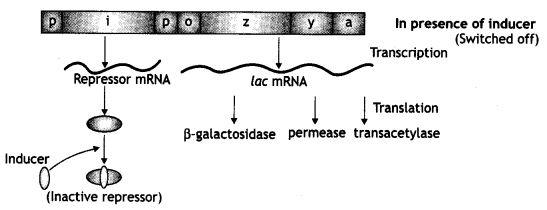
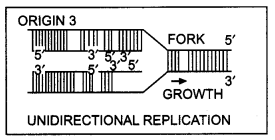 Unidirectional repLication
Unidirectional repLication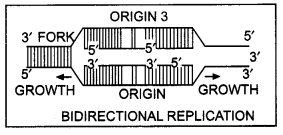 BidirectionaL replication
BidirectionaL replication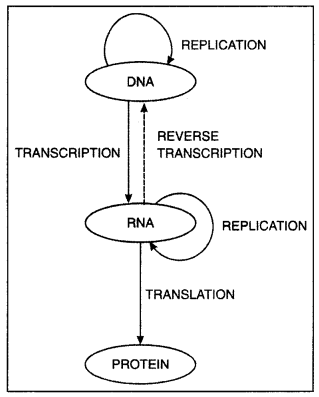 The flow of genetic information.
The flow of genetic information.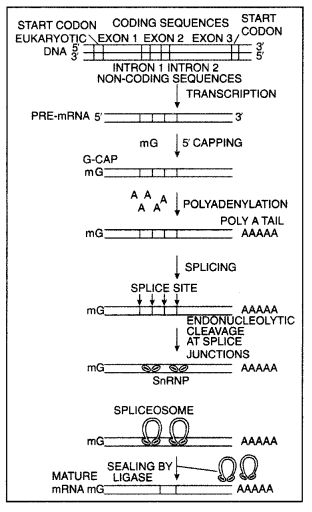 Transcription in eukaryotes
Transcription in eukaryotes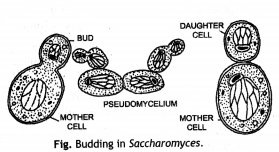

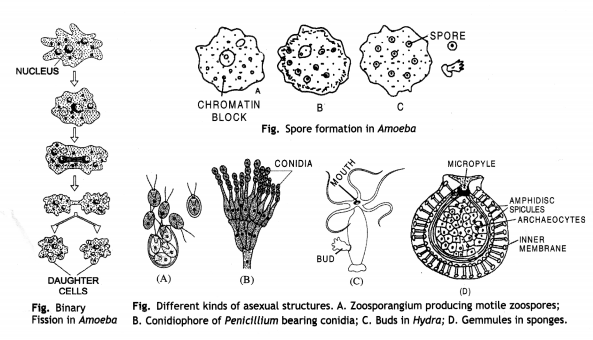
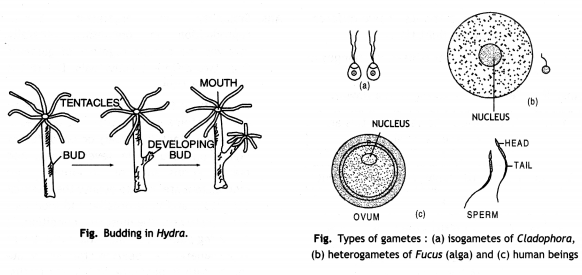

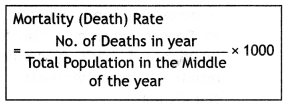
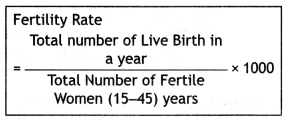

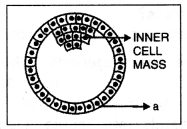
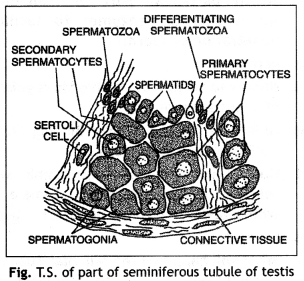
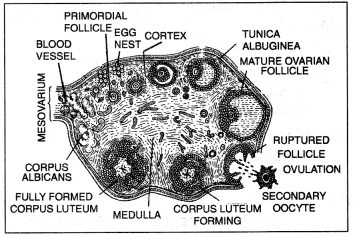
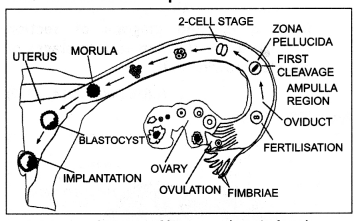
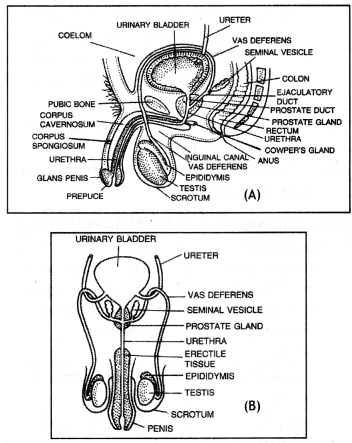
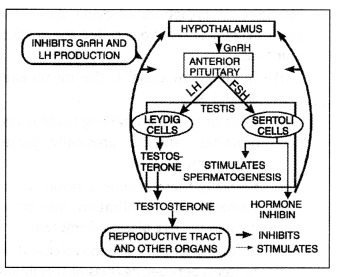

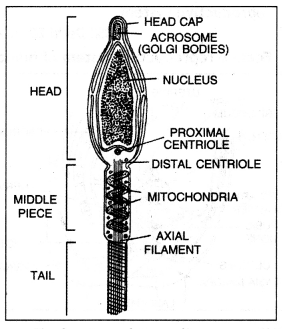
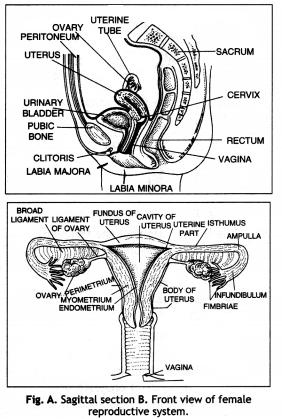
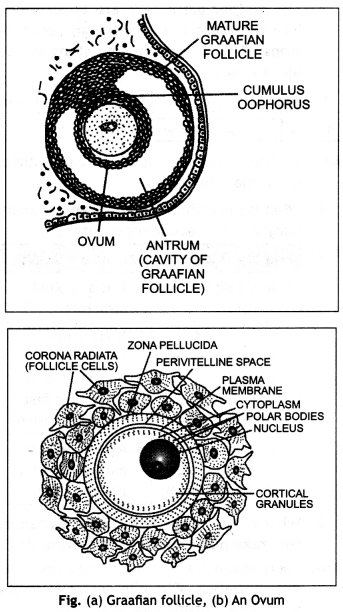
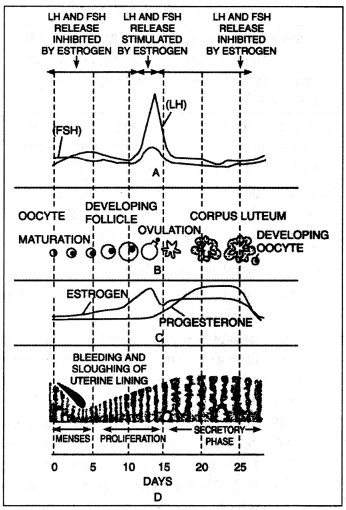
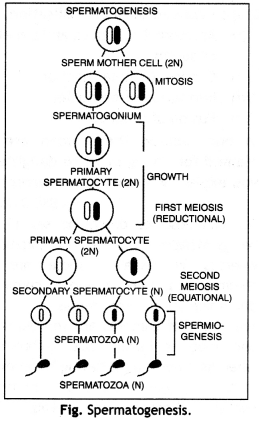

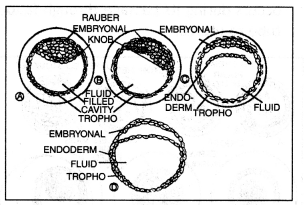
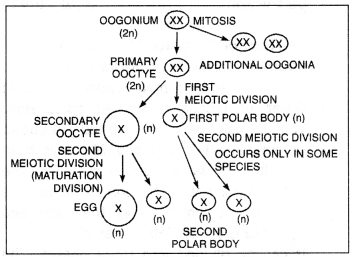
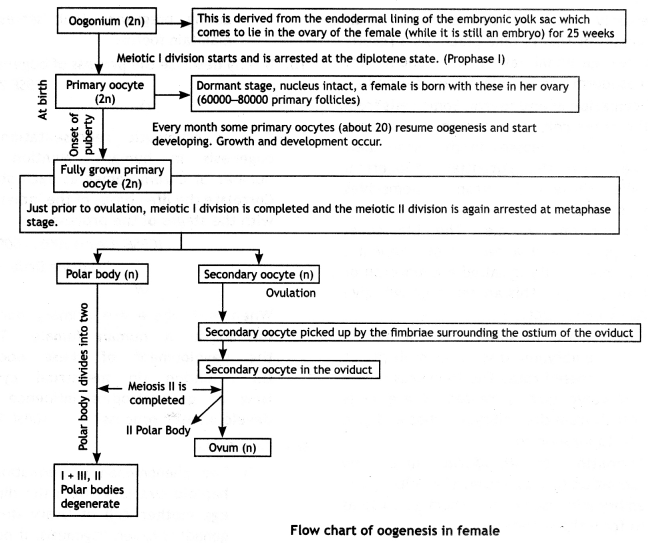
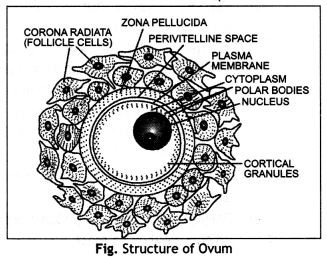


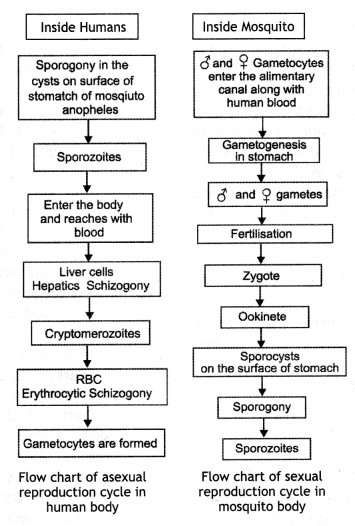
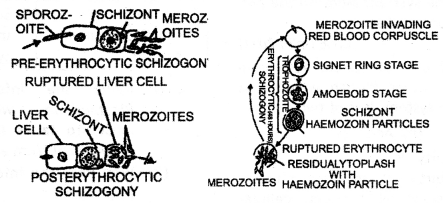 Life Cycle of Plasmodium
Life Cycle of Plasmodium
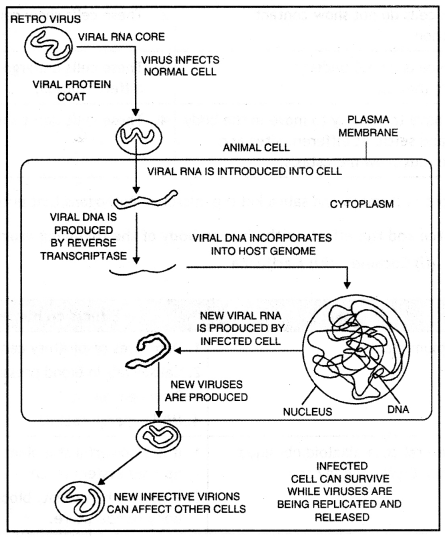 The action of HIV in the body cells.
The action of HIV in the body cells.